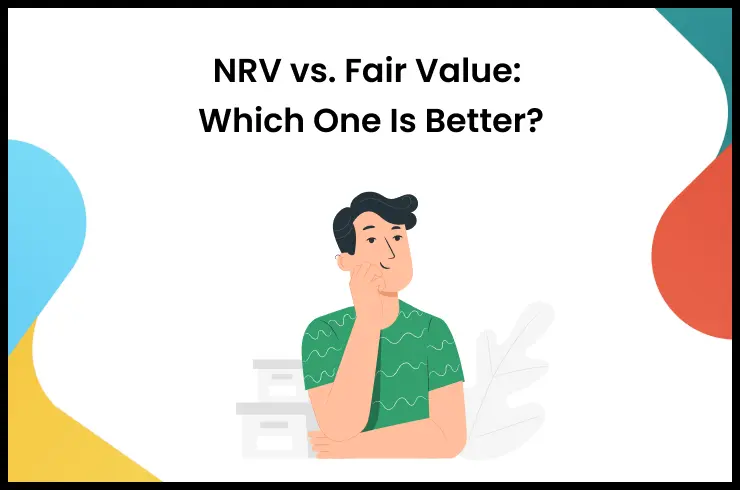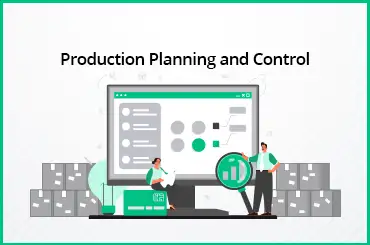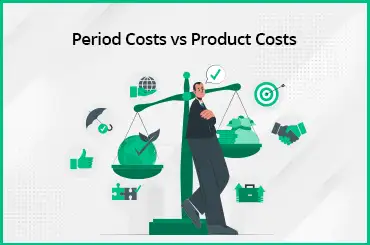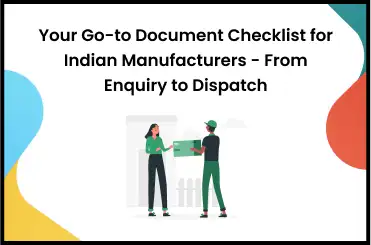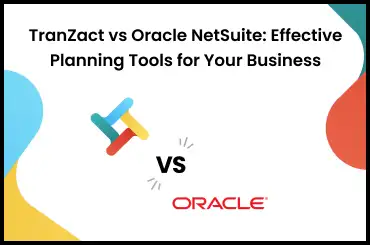ERP trends are constantly evolving to meet the changing needs of businesses, incorporating advancements in technologies.
Since the purchase of an enterprise resource planning (ERP) software system is of the largest expenditures a business will make, they should investigate the solutions available now and the upcoming ERP trends before making a final decision.
This decision affects every facet of the firm, including manufacturing, inventory, human resources (HR), finance, operations, sales, and more.
In an effort to aid our readers, we surveyed industry executives to learn more about what to anticipate from ERP in the near future. ERP's future is more promising than ever because of developments like cloud computing, the Internet of Things (IoT), ERP systems tailored to specific industries, and artificial intelligence (AI).
Common Modules
When customizing your ERP, you may choose from a variety of pre-built features and modules based on the latest trends in ERP. Our top picks for you to check out are listed below.
Controlling Stocks
Trying to keep track of stock without some kind of inventory management system or module is like trying to find your way through the wilderness without a map or compass. Your inventory of raw materials and finished goods may be viewed in real-time with the help of this system. Use it for shipping, transferring, deploying, buying, tracking, and placing orders, among other things.
Supply Chain Management (SCM)
This component aids in monitoring your supply chain in order to identify bottlenecks and prevent delays in delivery. Whether you're looking to improve processes, streamline production, or rate suppliers you can rely on this module or standalone program as an invaluable tool. You can also leverage it to regulate warehouses, begin demand projections, monitor shelf life, conduct analytics, or do any number of other tasks.
Procurement
Procurement is the process of acquiring the materials and services your business needs to function. Catalog purchasing, billing, contract administration, expenditure analysis, requisitions, purchase order approval, and mobility are all functions that are commonly found inside this module or system. Finance and Accounting Accounting can help you organize your accounts payable and receivable, balance your general ledger, and provide detailed reports. Cloud accounting, billing and invoicing, and small company accounting software, as well as other specialized bookkeeping and financial tools, may greatly reduce the time spent on administrative and financial tasks.
HR
It's like trying to find a needle in a haystack when you need to find an employee's record. The right HR software gives you access to a wide range of helpful features, such as those for managing personnel, finances, payroll, time and attendance, employee records, and more. Keeping track of time off, education, and credentials has never been easier.
In the next section, let's look at ERP technology trends such as cloud ERP trends, two-tier ERP, and others.
Enterprise Resource Planning Trends
Some of the most important ERP trends are highlighted below:
Cloud ERP
Many businesses were content with on-premises ERP software and hesitant to switch to a cloud-based model. However, trends show that is beginning to change, with more companies opting for cloud ERP solutions like TranZact.
After all, it's cheaper, easier to implement, more adaptable, and expandable, requires no in-house IT staff dedicated to ERP, and makes room for brand-new features. In the midst of a pandemic, when most workers choose to work from home, the convenience of remote access to data, work, and collaboration has been invaluable.
Again, this leads to cost savings for both employers and workers, in the form of reduced transportation, rental, and equipment expenses.
Digital Transformation
Business operations, productivity, and income may all benefit from the widespread use of digital technologies and practices.
A company's ability to provide excellent customer service and maintain its relevance in the market can both improve due to digital advancements. Since an enterprise resource planning (ERP) system affects every part of an organization, it's a good location to begin a company's transition to digital operations.
Two-Tier ERP
In the past, it was common practice for businesses to use a single ERP system across all of their locations. However, this ended up being more costly and difficult to implement than originally anticipated. Many difficulties arose since subsidiary offices had different needs that didn't call for the full capabilities of the corporate system. For this reason, it is likely that two-tier ERP software trends will become the standard in ERP in the near future.
Companies can benefit from this strategy by implementing two distinct ERP systems: one at the headquarters (tier 1) and another at the subsidiaries and regional offices (tier 2), with the latter often being a cloud-based implementation. Financial and other mission-critical procedures at bigger firms may continue to utilize the core ERP solution, while branches with fewer employees may adopt solutions tailored to their needs.
Other Technology Integrated With ERP
While it's true that modern ERP plays a significant role in helping businesses become digital, this change is only one facet of the wider technology upheaval now taking place in the corporate world. In order to modernize their fundamental operations, businesses are incorporating new technologies, such as the Internet of Things (IoT), into their existing apps for doing business.
Some businesses go even further by syncing their ERP operations and e-commerce platforms so that customers can place orders online and have them immediately processed, with stock levels automatically updated and payments recorded.
The Internet of Things
The Internet of Things (IoT) is a system in which no human interaction is required for the transmission of data between linked objects via a network. Installing sensors in an automobile that relay that data to a central hub would allow the owner to keep tabs on the vehicle's health and schedule repairs as needed.
Attachable ERP devices collect data from tools and machinery and send it to online programs. Access to data on performance, usage, location, and other metrics helps businesses identify underutilized or otherwise neglected assets and prioritize maintenance.
Individualization
Older ERP systems were stiff because they were written in difficult languages, but today's cloud-based alternatives are more configurable and easy to use.
ERP system developers are also tailoring their products to meet the needs of certain sectors, such as food and beverage (F&B) or the industrial sector. ERP software that can combine customizable dashboards, AI-driven interfaces, and other capabilities is warranted as the emphasis on personalized and tailored solutions grows.
One example of this is a chatbot powered by artificial intelligence that can respond to consumer questions using either text or speech and then look up relevant information in an enterprise resource planning system.
Based on these future trends in ERP systems, we can expect to witness significant automation in operations management. Let's see what the future of ERP will look like.
How Will ERP be Transformed in the Future?
It is expected that more and more businesses will move their ERP solutions to the cloud as the benefits of flexibility and speed become more apparent. This will aid companies in competing in today's market and maintaining their relevance.
Companies that have adopted cloud ERP will look at ways to maximize the benefits of their cloud computing infrastructure.
The COVID-19 pandemic has ensured that everyone is prepared should another calamity approach us again in the future, so businesses can look forward to optimizing their ERP software for remote work. This implies remote access to key data must be made easier, and mobile ERP capabilities must be improved, automated, and supported, as must remote training sessions.
Supply chain management capabilities are also anticipated to grow so that businesses may better prepare for and respond to unexpected shifts and interruptions.
ERP in a Post-pandemic World
In order to stay competitive, it is crucial for businesses to update their ERP systems to reflect the most recent developments in the field. In the post-pandemic world, software development firms, are making strides to make their solutions more intuitive and widely applicable. They are also extending their product lines by creating multi-user platforms, cloud services, and mobile apps.
TranZact is an easy-to-use, modern, and sophisticated ERP solution provider that digitizes production, inventory, sales, purchases, and material planning on a single platform. It streamlines all these functions and enables SMEs to grow without being held back by traditional ERP practices. It’s one of the most trusted and trending ERP software for manufacturers.
FAQs on ERP Trends
1. Which new developments are shaping ERP software?
There have been numerous developments in the ERP software space because of the demand for teleconferencing, the Internet of Things, seamless automation, bot-based solutions, and review systems.
2. Which ERP module has shown the most growth and usefulness, and why?
The inventory module within ERP has experienced substantial growth due to its ability to provide valuable insights into inventory movements, reduce costs associated with inventory management, and enhance sales performance.
3. What effect will future technology have on ERP?
The Internet of Things and the cloud will have a major effect on enterprise resource planning by introducing novel ways to optimize processes, hence increasing productivity while decreasing overhead.
4. How can Enterprise Resource Planning improve business output?
The ability to plan, schedule, and optimize work efficiency is one way in which ERP may boost business success. ERP employs workflows to automate procedures, track orders, and examine quality results, thereby improving customer satisfaction.
5. ERP integrations: what are they good for?
ERP integrations are highly beneficial as they allow seamless data exchange and collaboration between various business systems, enabling streamlined processes, improved data accuracy, and enhanced decision-making capabilities.







